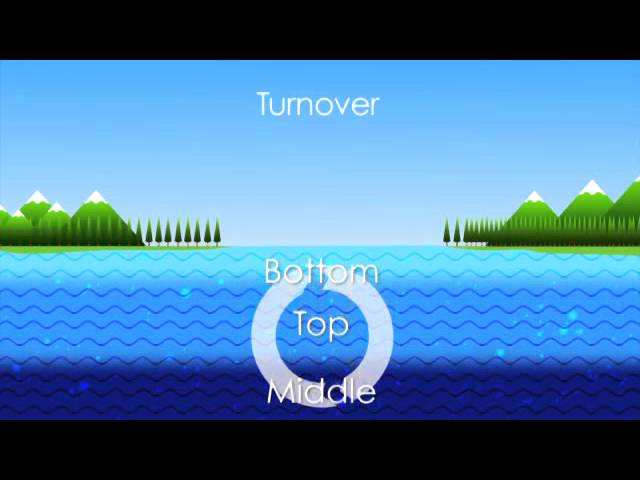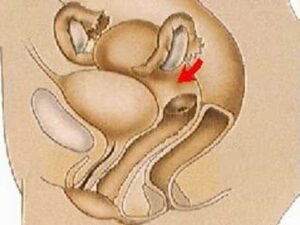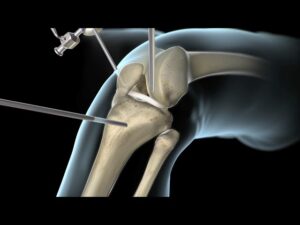Hi, I’m Emerald Robinson, and in this “What is” video, we’ll examine the question, “What is water (http://www.redorbit.com/topics/water/) circulation?” In nature, water circulation is the mixing of layers found in a body of water. This mixing helps to equalize the distribution of oxygen concentration, nutrient levels, salt concentration, the amount of waste and pollution, and temperature. While water circulation occurs to some degree in many bodies of water, it’s especially important in lakes, estuaries, and oceans. Since lakes are largely still and calm, water circulation is vital to their ecosystems’ health. Lake water tends to form three layers: top, middle, and bottom. When these layers mix, the lake experiences what is called “turnover.” Turnover is driven by differences in water density. Cold water is more dense than warm water and sinks; warm water rises. When air temperatures at a lake’s surface get colder, so does the temperature of the top layer. This layer becomes more dense and sinks, forcing the other layers to rise and mix. Estuaries form when fresh water from a river’s mouth mixes with seawater. Salty water is less dense than freshwater, and forms a layer at the surface of an estuary. Since different kind of organisms can live in different amounts of salt water, water circulation is crucial in estuary ecosystems. Winds, tides, rainfall, and even storms play vital roles in the rate of an estuary’s water circulation. Water circulation in oceans is called thermohaline circulation – circulation driven by both temperature and salt concentration. Thermohaline circulation occurs when water carried by currents flowing from the equator to the poles becomes cool, and sinks, flowing deep below the surface to refill the ocean basins, then rising back towards the surface as it becomes warmer and saltier. This type of water circulation carries heat to different parts of the globe, affecting land masses and, in turn climate and weather patterns – even the weather where you are!

What is Water Circulation?
- Post author:
- Post published:May 17, 2021
- Post category:Uncategorized
- Post comments:0 Comments
You Might Also Like

Increase Strength, Power, Muscular Endurance | Lifting with Meyers | Brendan Meyers

? High DHT Affects How Much Hair You Have On Your Head – Hair Loss Part 3

Pregnant? Help Protect Your Baby from Whooping Cough

Why You Got Fat

Building Your Meal Plan! Learn How To Calculate Protein, Carb & Fat Daily Intake For Your Goals!

Sports Physiotherapy Video – 14

Organ Transplantation Surgeries Video – 5

How the Body Works : Female Reproductive Organs

Chances of pregnancy with Gonadotropin and HCG injection – Dr. Sangeeta Gomes

simple ways to increase sperm counts

How To Burn Body Fat Naturally | Best Fat Burning Tips For Women

Hypertension and Stroke (Health Tip)

How To: Skull Crushers

Hysterosalpingogram Procedure | Hysterosalpingogram Video – ARC Chennai

Sports Surgeries Video – 2

GLUTAMINE Supplement Details in Hindi – Use, Benefits and Side Effects – HEALTH JAGRAN

Are BCAA’s Worth It? (Branched Chain Amino Acids Review)

Gynecological Surgeries Video – 5

Gym/ Health Club Management Video – 1

Incline Chest Press Machine – Develop Fuller Upper Pecs

Physiotherapy in Obstetrics Video – 10

HOME WORKOUT TRAINING – Static & Strength Calisthenics

Mayo Clinic Minute: Innovative research to fight kidney disease

Laproscopic Surgeries Video – 5

General Pharmacology lectures – 01 – Introduction

How To Use CREATINE To Build Muscle: Loading, Timing & Hair Loss? (Science Explained)

Causes Of Vomiting In Babies – How To Overcome

Spa Types Video – 3

Flutter Exercise-3

Orthopedic Physiotherapy Video – 3

Yoga Counciling Video – 6

How to Shave with Acne and Oily Skin | Men’s Skin Care Tips

Professional Warm Up for Any Sport!

What is ANEMIA? What does ANEMIA mean? ANEMIA signs, symptoms, causes & treatment

What is Fish Oil? Omega-3 Benefits & Side Effects Review by Guru Mann

Treating Cystic Acne with Accutane or Isotretinoin

Production and Action of Testosterone

Pectoralis Pushups-4

Special Weight Loss Routine Video – 5

Critical Care Medicine Video – 4

What Other Trainers Will Not Tell You: Building Huge Quads. Leg Press Done Right.

